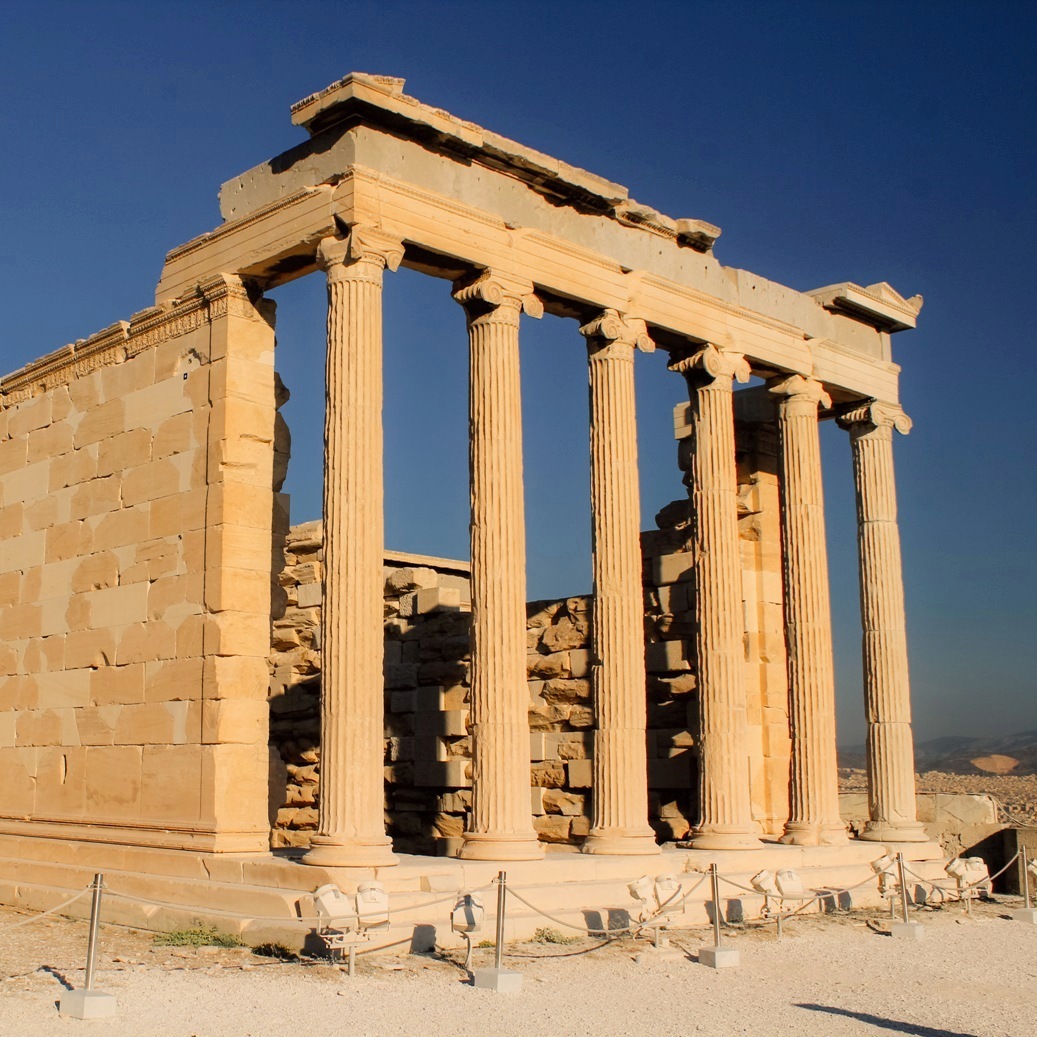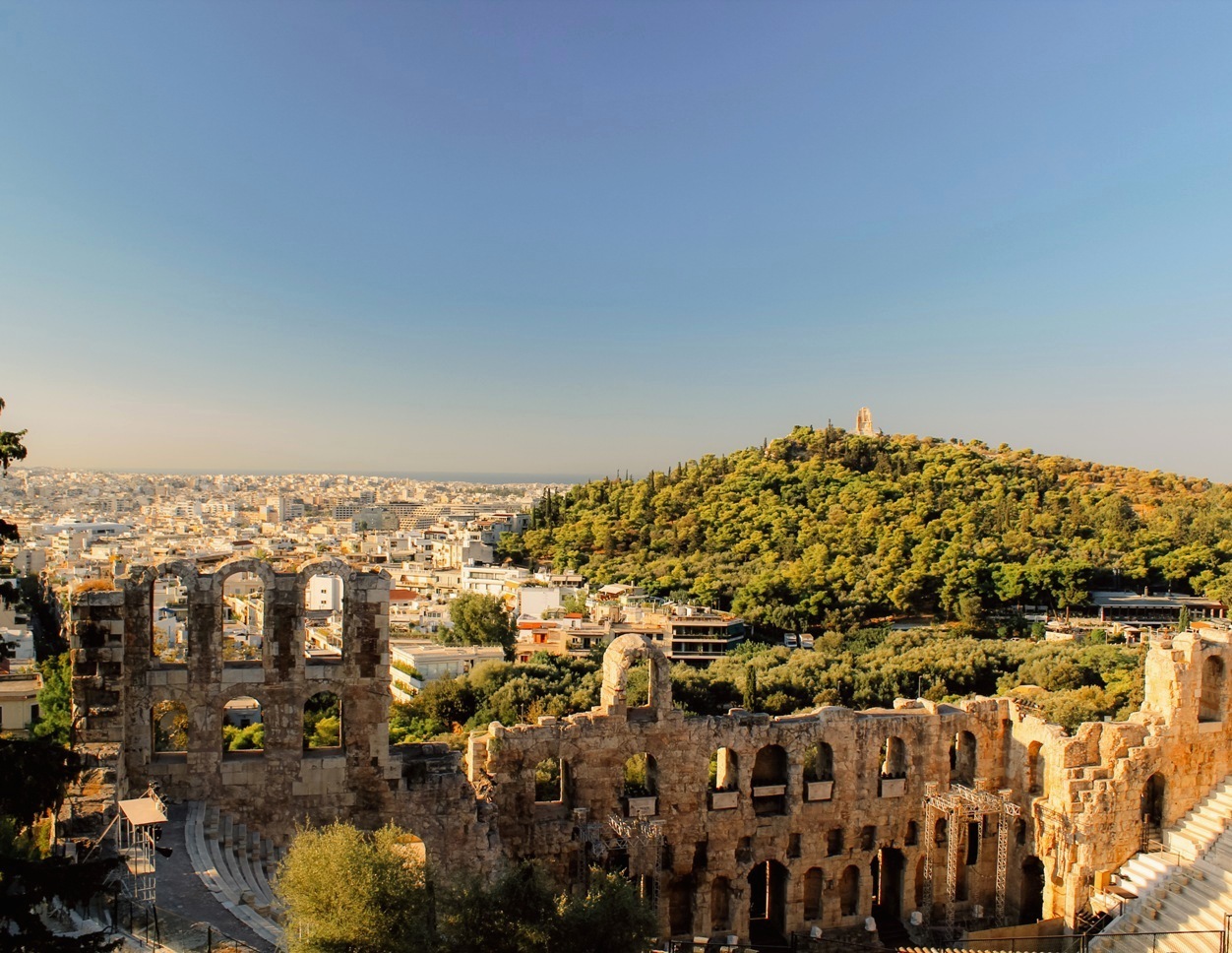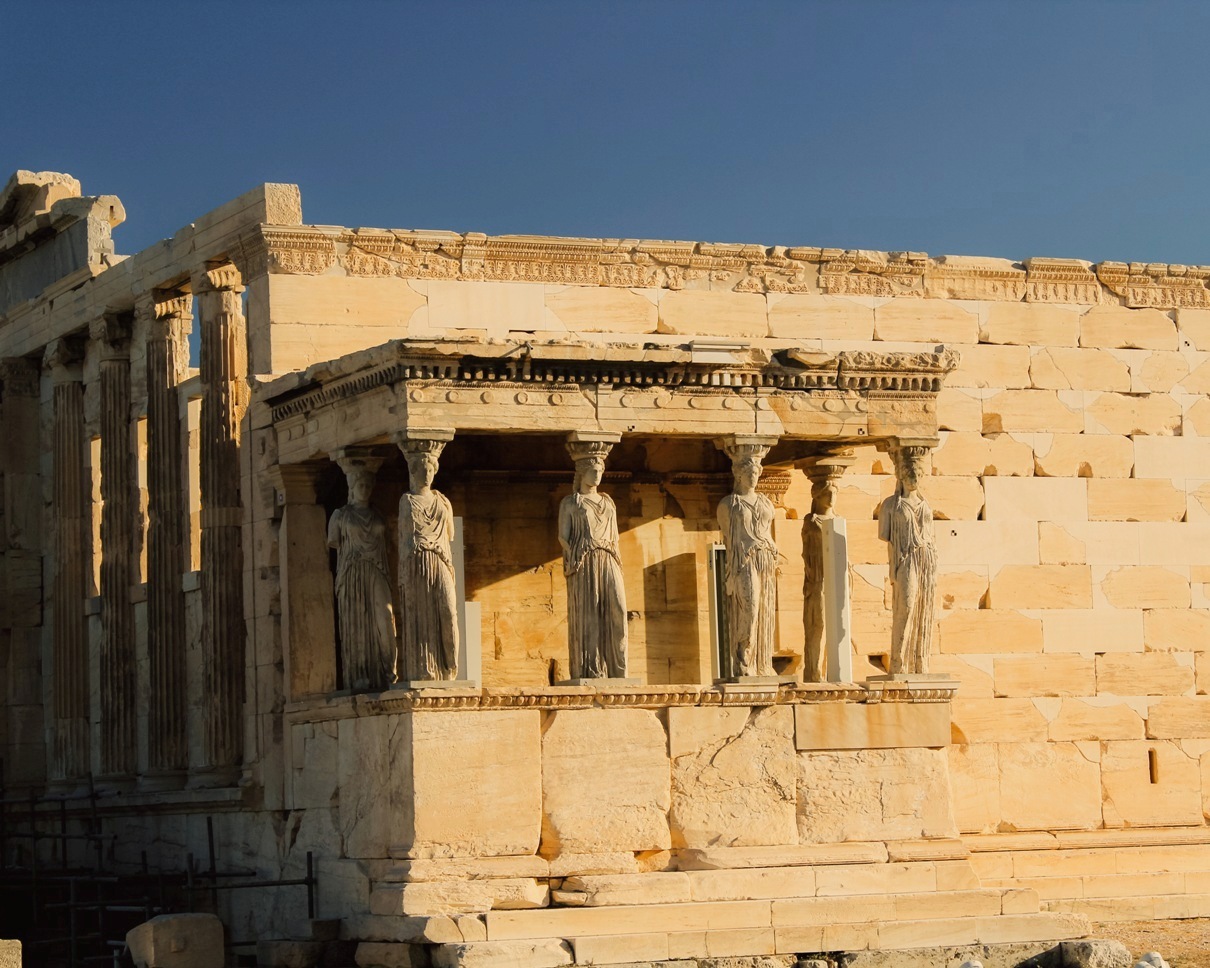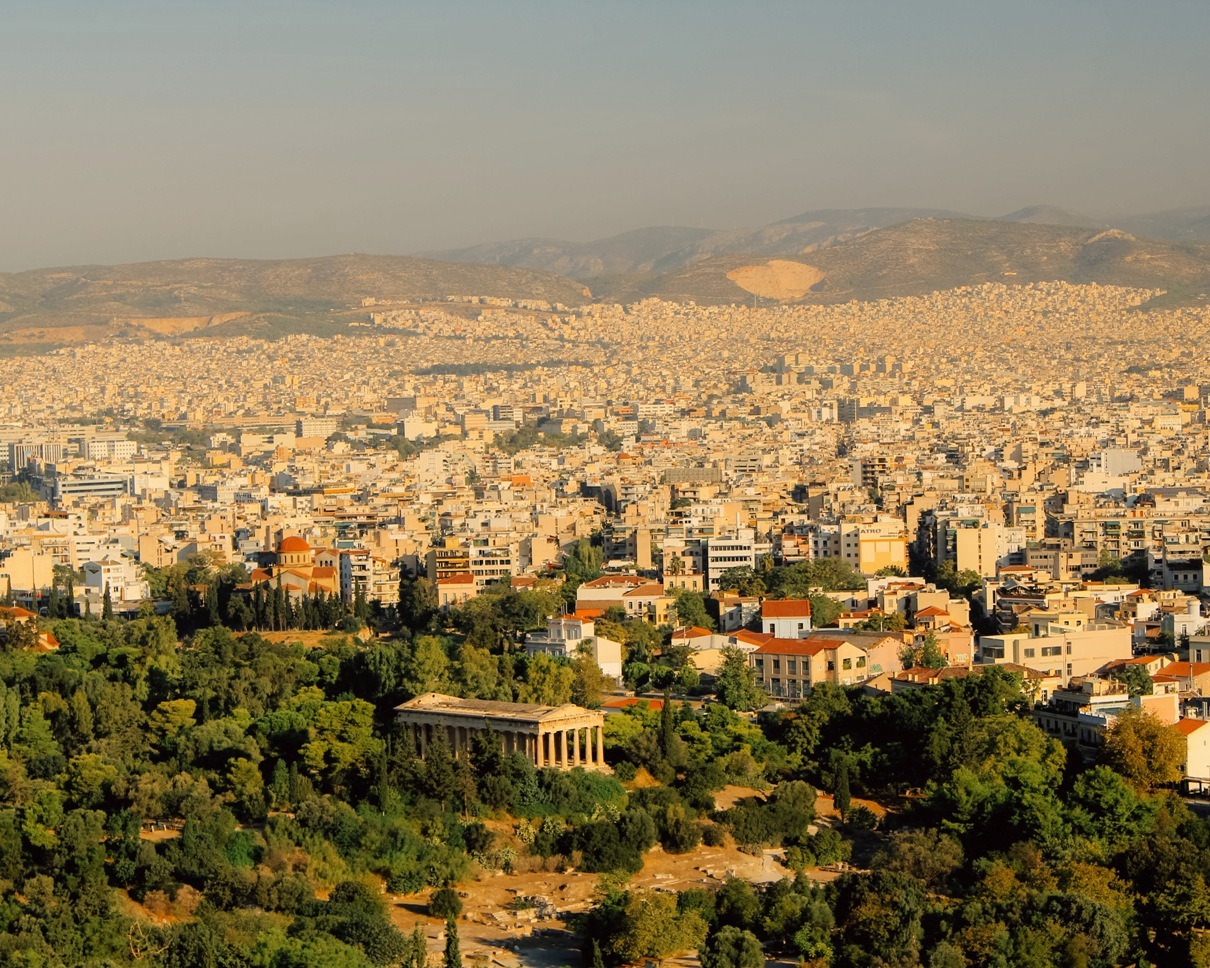Let’s talk today about visiting the Acropolis – the main attraction of Athens. The famous Parthenon is renowned worldwide and is the hallmark of Greece.
For many of us, the Acropolis is simply ancient white ruins, not signifying anything special. Some columns, ruins, arches, carved figures of people, gods… but what lies behind all these white ruins? Let’s figure it out!

What is the Acropolis?
The word itself means “the highest point of the city”. And indeed, the Acropolis stands on a high hill, visible from any point in the city. It is even forbidden to build tall buildings in the city so that they do not obstruct the view of the Parthenon. And the Parthenon is the main and most recognizable ancient temple, the one with the columns.
This temple was built in honor of the patron goddess of Athens – Athena Parthenos, in gratitude for the salvation of the capital in the Persian Wars. For many centuries, the Parthenon was used as a Greek temple, but it could also function as a treasury, mosque, and church. Today, it is the most popular place in the ancient world dedicated to Athena – the goddess of war and wisdom, as well as the virgin goddess. In the official name, the Parthenon is called the “Temple of Athena the Virgin” (translated from Greek, Parthenos means virgin).
If you are looking for more interesting places in Greece, then travel to the cozy village of Afitos, located on the Halkidiki Peninsula. Read also about the peninsula here.
Why was the Acropolis built?
In the Acropolis, ancient Greeks sought refuge from enemies, as from above there was a perfect panorama of the entire city and access to the site was under control. In ancient times, life thrived here. The Acropolis housed theaters, temples, warehouses with weapons, and residential buildings.
Once there was simply a huge statue of the goddess herself (10 meters) made of ivory and real gold. Traditionally, solemn processions came to it during the celebration of the Great Panathenaea, a festival in honor of the city’s patron, which was held 4 times a year.

The initiator of the construction of the Parthenon was the Athenian politician Pericles. The forms and proportions of the temple are perfect, it is ideal in its simplicity, and this is seen not only by experienced architects.
And under the Parthenon is the Theater of Dionysus. The theater was named after the god of winemaking, who was killed by the Greeks, thinking that he was poisoning them with wine.
The celebration of his death was marked by noisy revelry, which is why the theater was created, where the tandem of poetry and tragedy was born. Everyone wanted bread and circuses. It was on its orchestra that the works of Sophocles, Aeschylus, and Euripides were first performed. A trench filled with water flowed between the orchestra and the rows. This trick allowed to improve the voices of the actors.
But besides performances, gladiatorial fights were also held here. It was once a very cult place that held the status of the most beautiful city in the country. For more information, read on Wikipedia, but we move on.
Visiting the Acropolis is the most romantic place in the city, from the height of this hill, views of the Athens open up. Perhaps these are the best views of the city.
But it will not be possible to see the Parthenon itself well. Here’s the paradox. Rope barriers and scaffolding prevent you from getting too close to this well-known ancient structure from history books. Those very female figures, caryatids, carved in stone, are just copies. Such women were a substitute for columns and pilasters. If the statue depicted a girl with a basket of fruits on her head, then it was a caryatid. This name came from the dancing girls with baskets on their heads from the city of Caria.
The stone sculptures are harmoniously integrated into the Erechtheion temple, dedicated to Athena, Poseidon, and King Erechtheus. What do Poseidon and Erechtheus have to do with it? In one of the bloody battles, Erechtheus killed Poseidon. In punishment, Zeus struck the king with lightning, and now as evidence, deep cracks diverge on some marble slabs, and the body of the king rests in one of the tombs.

The plan for the construction was developed by the sculptor Phidias. But it happened that he was brought to trial for the theft of valuable materials and accused of impiety – they say, he dared to depict not gods, as it should be, but himself and his friend Pericles. But Phidias wasn’t that simple, having escaped from prison, he created Zeus – one of the seven wonders of the world.
Do you want to explore Greece in more detail? Then read my post about one of the most stunning places in the country, you could say it’s another one of the wonders of the world – the Greek monasteries of Meteora! Be sure to make time to get there!
Time spares nothing, it destroys everything we create. But despite this, the center of Hellenic culture makes the strongest impression.
The Athenian Acropolis has always been for me exactly the place I wanted to visit. And now I am in such anticipation. I always saw it only in pictures. And here I am! Right inside history. Hooray!
If you have the opportunity to stay in Athens until evening – book a table at one of the restaurants in the city center with an open terrace overlooking the Acropolis. At night, it is delightful, illuminated by spotlights, and looks like a shining diamond. This place seems mystical at night. Also, take a walk through the cozy streets of Athens. The ancient streets of the city will give you more, and you will be pleasantly surprised!
How to get to Parthenon.
Before visiting the Acropolis, it’s essential to plan your visit meticulously. Consider factors such as weather, time of day, and any local events that might affect accessibility. The Acropolis is a popular tourist destination, so aim to arrive early to avoid crowds and scorching midday sun.
Athens boasts a well-connected transportation network, making it relatively easy visiting the Acropolis from various points in the city. Here are some recommended modes of transportation:
Metro: The Athens Metro is efficient and convenient. Take Line 2 (the red line) to the Acropoli station. From there, it’s a short walk to the entrance of the Acropolis.

Bus: Several bus routes service the area around the Acropolis. Look for buses labeled “Acropolis” or “Museum” depending on your starting point. Be prepared for potentially slower travel times, especially during peak hours.
I highly recommend traveling by car as it is the most convenient and direct option. If you don’t have a car, you can rent one at very reasonable prices here.
There are dozens of other cities across Europe that offer fast and direct connections to Athens, so it’s quite convenient to see. Click here to find the cheapest rates on Avaisales.
Choosing your entrance:
The Acropolis has two main entrances: the main entrance from Dionysiou Areopagitou Street and the south slope entrance near the Acropolis Museum. Both entrances offer access to the site, but the main entrance tends to be busier, especially during peak tourist season. Consider using the south slope entrance for a potentially smoother entry.
Ticketing and admission:
Visiting the Acropolis, you’ll need to purchase a ticket. Tickets can be bought at the entrance gates or online in advance to save time. There are various ticket options available, including combination tickets that grant access to multiple archaeological sites. Remember to carry cash for ticket purchases, as credit card acceptance can be limited.
Practical tips:
- Wear comfortable walking shoes, as the pathways at the Acropolis can be uneven and steep.
- Bring sunscreen, a hat, and plenty of water, especially during the hot summer months.
- Take advantage of designated photo spots for capturing memorable moments without obstructing other visitors.
- Acropolis Tours: You can find good Acropolis tours here.

The best hotels with Acropolis views.
Are you planning a trip to Athens and looking for accommodations that offer breathtaking views of the iconic Acropolis? Look no further! Athens boasts a plethora of luxurious hotels that provide not only comfort and convenience but also unparalleled vistas of the ancient citadel. Here are some of the best hotels where you can wake up to the mesmerizing sight of the Acropolis:
Hotel Grande Bretagne: Situated in the heart of Athens, Hotel Grande Bretagne is renowned for its opulent décor and impeccable service. Rooms and suites offer panoramic views of the Acropolis, allowing guests to marvel at the historic landmark from the comfort of their own space. The hotel’s rooftop restaurant, with its terrace overlooking the Acropolis, provides an unforgettable dining experience.
Divani Palace Acropolis: Nestled at the foot of the Acropolis hill, Divani Palace Acropolis offers elegant accommodations with Acropolis views from select rooms and suites. The hotel’s rooftop restaurant provides an ideal setting for enjoying Greek cuisine while taking in the sight of the illuminated Acropolis at night.
Herodion Hotel: Just a stone’s throw away from the Acropolis Museum, Herodion Hotel combines modern comfort with a touch of Greek hospitality. Many of its rooms and suites offer balconies with direct views of the Acropolis, allowing guests to soak in the beauty of this ancient monument at any time of day.
Looking for more content to get inspired by Greece? Then read the post about films about Greece.
If you liked this post “Visiting the Acropolis – the main attraction of Athens” then please follow me on Instagram, so you don’t miss any updates.
I am available for commercial work such as personal photography, brand photography, product photography and more. If you would like to work with me, feel free to email me – hello@foxgleann.com.



